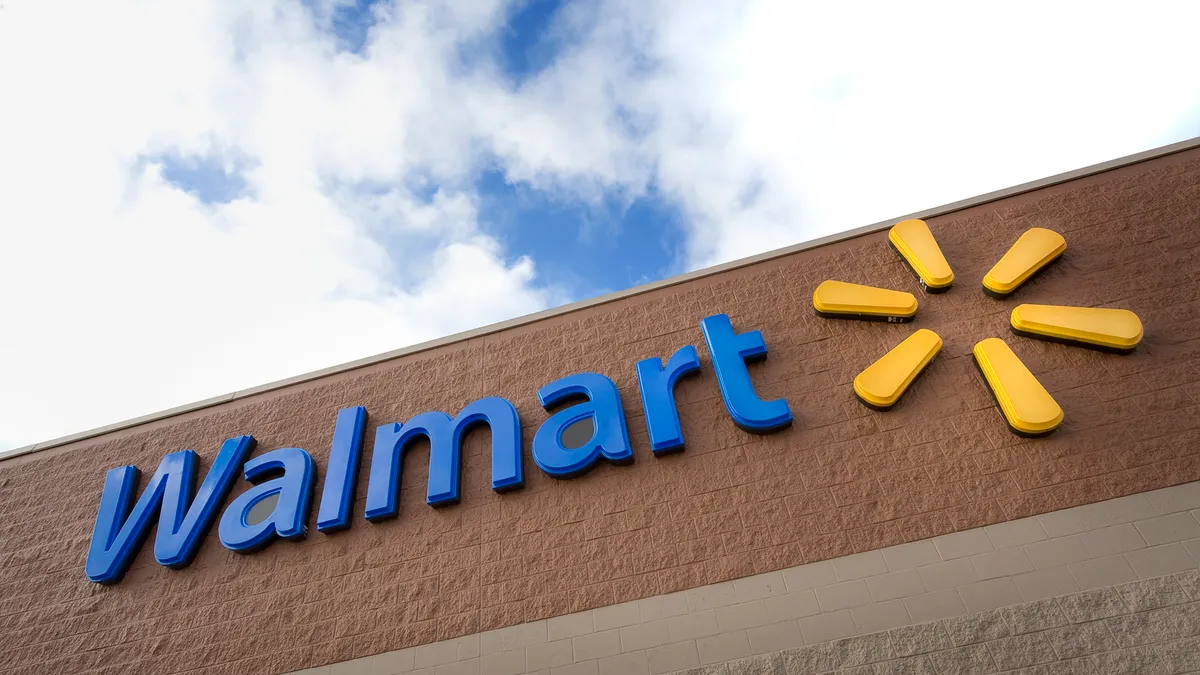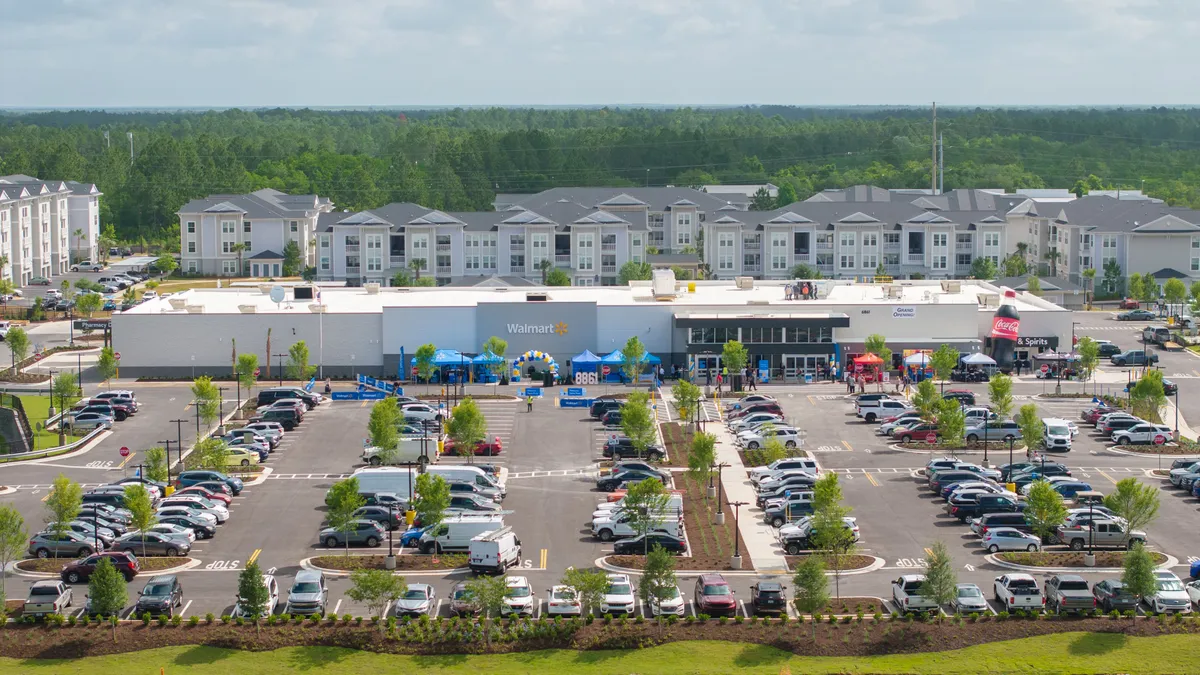Dive Brief:
- Wal-Mart stores in the Dallas-Fort Worth area average between 500 and 600 online grocery orders each week, according to The Dallas Morning News. Some stores regularly process as many as 900 weekly orders.
- The retailer was the first to offer online grocery ordering and curbside pickup in the North Texas market, in October 2015, and since then it has expanded the service to 50 area stores.
- Wal-Mart offers curbside pickup at 500 stores across the country, and will add the service to 600 more stores this year.
Dive Insight:
Making money off click-and-collect services can be difficult for grocers, given the additional labor required and the relatively small amount of new business they generate. But research shows grocers that are first to market gain a major advantage.
“Once you get to the second or third retailer the options are more ubiquitous and it’s really just an additional cost of doing business,” Bill Bishop, chief architect at consulting firm Brick Meets Click, recently told Food Dive.
Wal-Mart, which counts Texas as its largest grocery market, was the first retailer in the booming Dallas-Fort Worth area to offer curbside click-and-collect in October 2015 — a move that has clearly paid dividends.
Since then, other retailers including Kroger, Tom Thumb and Sprouts Farmers Market have begun offering online ordering and store pickup. Kroger’s ClickList is Wal-Mart’s closest competitor in the space, with hundreds of stores nationwide now offering the service. Sprouts, meanwhile, has partnered with Amazon, which is slowly expanding its retail partnerships, as well as standalone formats like its AmazonFresh Pickup that opened in Seattle just last week.
Many grocers have added home delivery to their online ordering suites, but Wal-Mart is betting on curbside pickup to drive growth in the channel. By the end of this year, the company will offer the service at more than 1,000 stores, and plans to make it available at all 4,600 stores during the next few years.
“We see a huge opportunity through pickup, particularly in grocery,” Doug McMillon, Walmart’s CEO, told investors back in 2015. “The combination of digital relationship and stores is a winner.”
Wal-Mart’s success in North Texas indicates this strategy is a winner. To stay on top in a competitive e-commerce market, the company will have to continue to evolve and execute.
So far, Wal-Mart seems to have one crucial element of its curbside service down: staffing. An e-commerce manager told The Dallas Morning News that one of its stores has ten associates dedicated to the curbside service, while 30 others have been trained to fill in when things get busy. Workers receive three weeks of training and roam the store with a special cart made to fill multiple orders at once.









